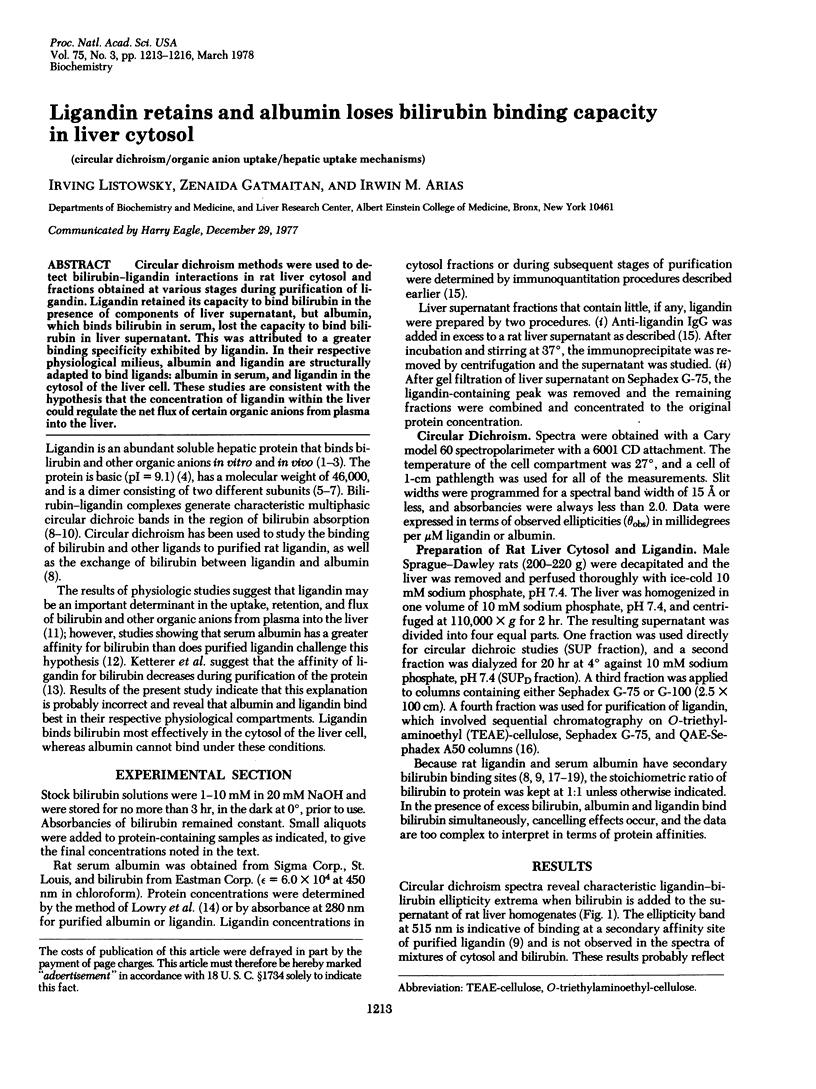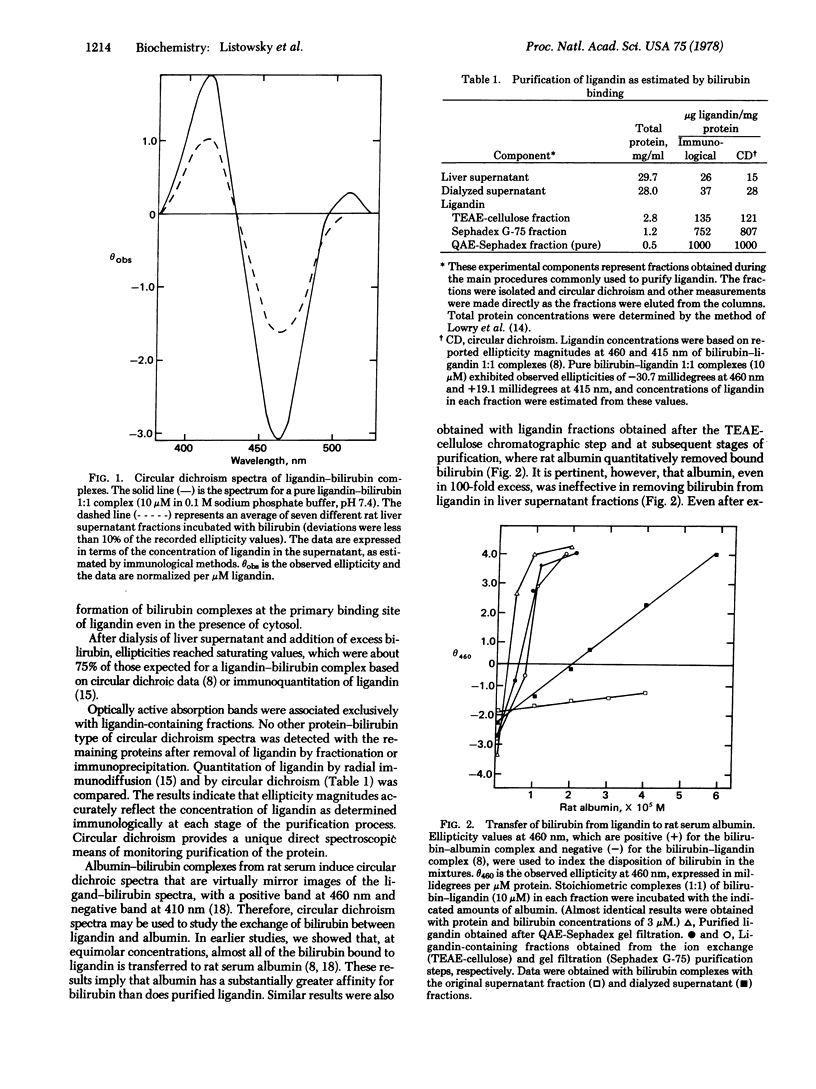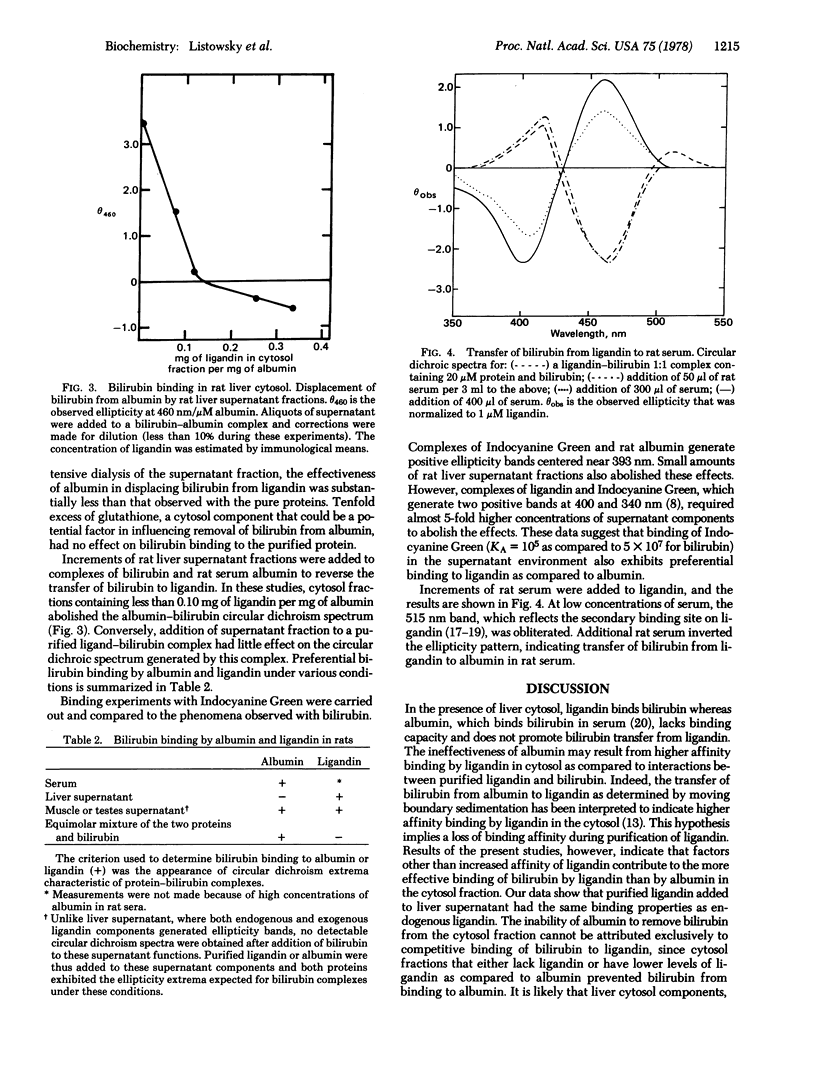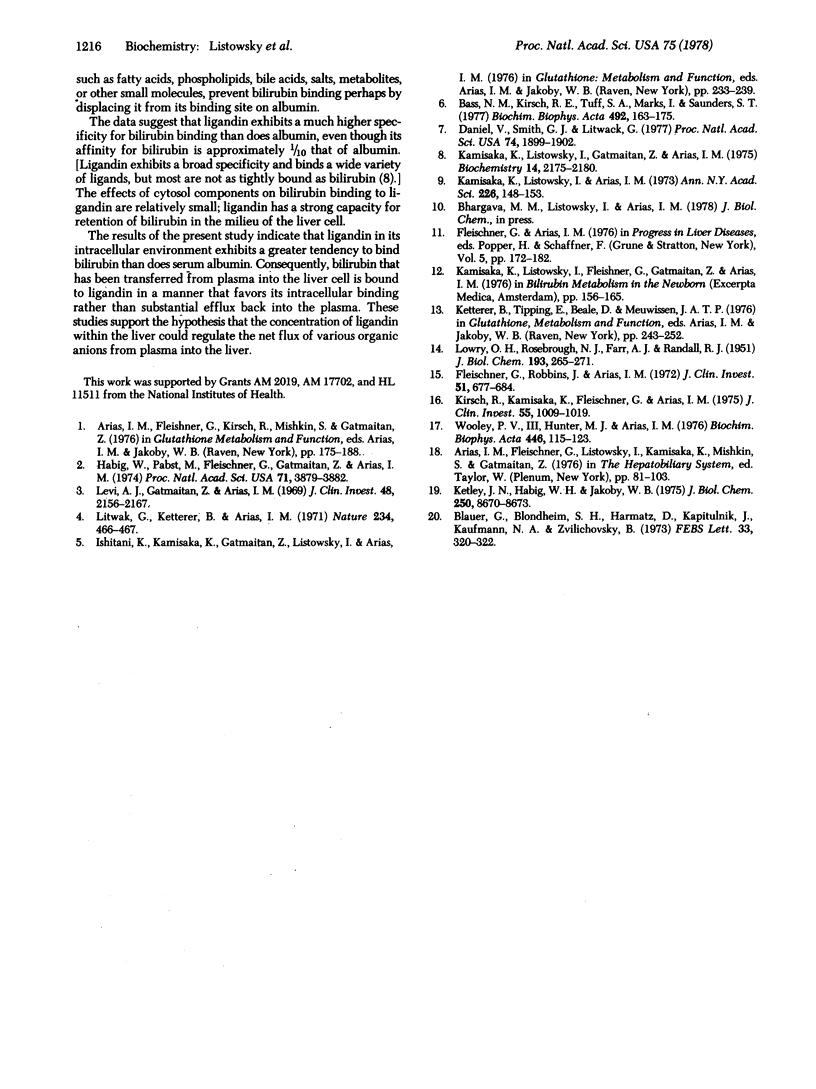Abstract
Circular dichroism methods were used to detect bilirubin-ligandin interactions in rat liver cytosol and fractions obtained at various stages during purification of ligandin. Ligandin retained its capacity to bind bilirubin in the presence of components of liver supernatant, but albumin, which binds bilirubin in serum, lost the capacity to bind bilirubin in liver supernatant. This was attributed to a greater binding specificity exhibited by ligandin. In their respective physiological milieus, albumin and ligandin are structurally adapted to bind ligands: albumin in serum, and ligandin in the cytosol of the liver cell. These studies are consistent with the hypothesis that the concentration of ligandin within the liver could regulate the net flux of certain organic anions from plasma into the liver.
Full text
PDF



Selected References
These references are in PubMed. This may not be the complete list of references from this article.
- Bass N. M., Kirsch R. E., Tuff S. A., Marks I., Saunders S. J. Ligandin heterogeneity : evidence that the two non-identical subunits are the monomers of two distinct proteins. Biochim Biophys Acta. 1977 May 27;492(1):163–175. doi: 10.1016/0005-2795(77)90223-9. [DOI] [PubMed] [Google Scholar]
- Blauer G., Blondheim S. H., Harmatz D., Kapitulnik J., Kaufmann N. A., Zvilichovsky B. Optical activity of human serum in the visible region compared with that of the complex bilirubin--serum albumin. FEBS Lett. 1973 Jul 15;33(3):320–322. doi: 10.1016/0014-5793(73)80220-0. [DOI] [PubMed] [Google Scholar]
- Daniel V., Smith G. J., Litwack G. Translation in vitro of rat liver messenger RNA coding for ligandin (glutathione S-transferase B). Proc Natl Acad Sci U S A. 1977 May;74(5):1899–1902. doi: 10.1073/pnas.74.5.1899. [DOI] [PMC free article] [PubMed] [Google Scholar]
- Fleischner G., Robbins J., Arias I. M. Immunological studies of Y protein. A major cytoplasmic organic anion-binding protein in rat liver. J Clin Invest. 1972 Mar;51(3):677–684. doi: 10.1172/JCI106856. [DOI] [PMC free article] [PubMed] [Google Scholar]
- Habig W. H., Pabst M. J., Fleischner G., Gatmaitan Z., Arias I. M., Jakoby W. B. The identity of glutathione S-transferase B with ligandin, a major binding protein of liver. Proc Natl Acad Sci U S A. 1974 Oct;71(10):3879–3882. doi: 10.1073/pnas.71.10.3879. [DOI] [PMC free article] [PubMed] [Google Scholar]
- Kamisaka K., Listowsky I., Arias I. M. Circular dichroism studies of Y protein (ligandin), a major organic anion binding protein in liver, kidney, and small intestine. Ann N Y Acad Sci. 1973 Nov 26;226:148–153. doi: 10.1111/j.1749-6632.1973.tb20477.x. [DOI] [PubMed] [Google Scholar]
- Kamisaka K., Listowsky I., Fleischner G., Gatmaitan Z., Arias I. M. The binding of bilirubin and other organic anions to serum albumin and ligandin (Y protein). Birth Defects Orig Artic Ser. 1976;12(2):156–167. [PubMed] [Google Scholar]
- Kamisaka K., Listowsky I., Gatmaitan Z., Arias I. M. Interactions of bilirubin and other ligands with ligandin. Biochemistry. 1975 May 20;14(10):2175–2180. doi: 10.1021/bi00681a021. [DOI] [PubMed] [Google Scholar]
- Ketley J. N., Habig W. H., Jakoby W. B. Binding of nonsubstrate ligands to the glutathione S-transferases. J Biol Chem. 1975 Nov 25;250(22):8670–8673. [PubMed] [Google Scholar]
- Kirsch R., Fleischner G., Kamisaka K., Arias I. M. Structural and functional studies of ligandin, a major renal organic anion-binding protein. J Clin Invest. 1975 May;55(5):1009–1019. doi: 10.1172/JCI108001. [DOI] [PMC free article] [PubMed] [Google Scholar]
- LOWRY O. H., ROSEBROUGH N. J., FARR A. L., RANDALL R. J. Protein measurement with the Folin phenol reagent. J Biol Chem. 1951 Nov;193(1):265–275. [PubMed] [Google Scholar]
- Levi A. J., Gatmaitan Z., Arias I. M. Two hepatic cytoplasmic protein fractions, Y and Z, and their possible role in the hepatic uptake of bilirubin, sulfobromophthalein, and other anions. J Clin Invest. 1969 Nov;48(11):2156–2167. doi: 10.1172/JCI106182. [DOI] [PMC free article] [PubMed] [Google Scholar]
- Litwack G., Ketterer B., Arias I. M. Ligandin: a hepatic protein which binds steroids, bilirubin, carcinogens and a number of exogenous organic anions. Nature. 1971 Dec 24;234(5330):466–467. doi: 10.1038/234466a0. [DOI] [PubMed] [Google Scholar]
- Woolley P. V., 3rd, Hunter M. J., Arias I. M. Bilirubin and biliverdin binding to rat Y protein (ligandin). Biochim Biophys Acta. 1976 Sep 28;446(1):115–123. doi: 10.1016/0005-2795(76)90103-3. [DOI] [PubMed] [Google Scholar]


